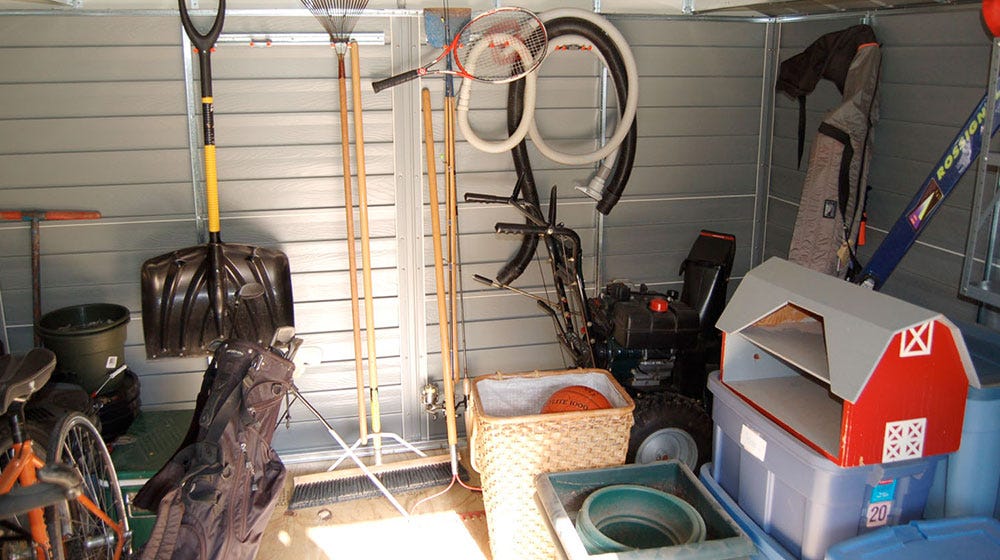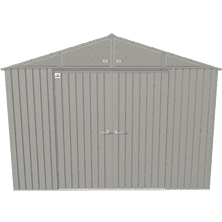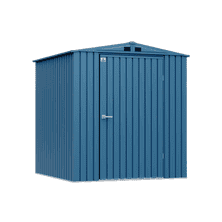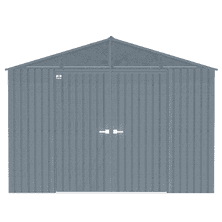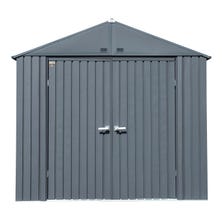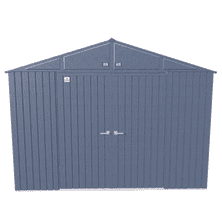No matter how careful you are with your belongings, mold is always a potential problem if you’re storing them outdoors. Not only can mold accumulate on the surface of your backyard shed, gazebo, or carport, but it can also cause serious damage to the items stored inside.
Learning how to prevent mold will help you keep all of your prized possessions safe. Start with these simple mold prevention tips.
5 Simple Mold Prevention Tips
If you want to successfully prevent mold, it's important to understand how it happens in the first place. In almost all cases, mold begins to develop as a result of excess moisture. Taking the following steps to reduce humidity and increase airflow will help keep your steel shed or other outdoor storage buildings from developing mold in the first place.
1. Start with a Solid Foundation
Every outdoor storage building needs a good foundation. This will prevent moisture from seeping in from underground. You can easily build a shed foundation with concrete pavers, a wood deck box, or a gravel pad. You can also purchase a pre-fabricated base kit.
A proper foundation will also provide extra drainage, helping to ensure your building doesn't flood. If a flood occurs, you’ll have difficulty getting all the moisture out and may end up with a long-term problem.
2. Add Some Ventilation
Ventilation is a critical part of mold avoidance! Your shed should have ridge vents in the roof and gable vents. These will allow moisture to escape without letting rain in. For extra protection, you can also add soffit vents under the eaves of your building. These vents help push warm, moist air out while drawing cooler, drier air inside.
High-quality sheds, like the ones made by Arrow already have ventilation built-in. If your shed doesn’t have ventilation already, you’ll need to add your own. You can find most of the materials you need at a local hardware store or purchase a pre-made ventilation kit.
3. Regulate Humidity
Taking steps to regulate humidity is another important mold prevention tip. Generally, you’ll want the humidity levels inside your shed to stay between 30 to 50 percent, depending on the season. If the inside of your storage building has a higher moisture level than this, consider using a dehumidifier. Just remember that you’ll need to empty the water tank one to two times a day. Otherwise, it won’t work properly.
Not sure about the humidity level in your unit? Purchase an inexpensive hygrometer. This simple device will help you detect rising moisture levels so you can proactively deal with it before mold starts to form.
You can also keep the air inside your storage building moving by adding a large fan to the space and keeping it running on low most of the time. If you continue to have humidity issues, consider using a moisture-removing substance, like Damp Rid, cat litter, or charcoal briquets. Any of these options will draw humidity out of the air and absorb it, helping to minimize the chances of developing mold.
4. Use Smart Storage Techniques
Practicing smart storage techniques is a big part of learning how to prevent mold. Before you put anything in a backyard shed, carport, or other building, always make sure it’s completely dry. This is especially important when storing swimming and boating equipment, bicycles, patio furniture, umbrellas, hammocks, and similar items.
When stacking items inside your storage buildings, try to avoid putting anything directly against the walls. Instead, leave at least a few inches of space between the items and the walls, as this will allow for better airflow. Also, avoid packing your items too tight. Not only will spacing them out give you enough room to move around, but it will also help avoid condensation.
It’s always a good idea to keep organic materials – like cardboard and newspapers – off the ground. Otherwise, they’ll soak up moisture and become a breeding ground for bacteria, mold, and mildew. So, if you can, try to keep everything off the ground. To do this, you can add some shelving for additional storage and consider placing larger items on wood pallets instead of directly on the floor or ground.
If you’re storing fabrics, consider placing them in airtight storage containers so mold can’t get to it. Covering furniture in plastic before storing it can also help prevent mold damage.
5. Practice Consistent Upkeep & Maintenance
Keeping up with your regular maintenance will help you avoid mold damage. It’s important to regularly inspect your roof and fix any leaks right away. You’ll also want to check the doors and windows to make sure they’re not leaking.
If you notice any moss on your shingles, this is a sign that your building is being exposed to excess moisture and suffering from a lack of sun exposure. You can often solve this problem by trimming nearby trees so more sunlight can hit the roof. It’s also a good idea to regularly mow and use a weed eater around the edge of your building. This will help prevent moisture build-up from seeping in through the ground.
If you’ve taken all the steps above and moisture is still a problem, consider coating your building in a layer of high-quality exterior latex paint. This will create a mildew-resistant coating.
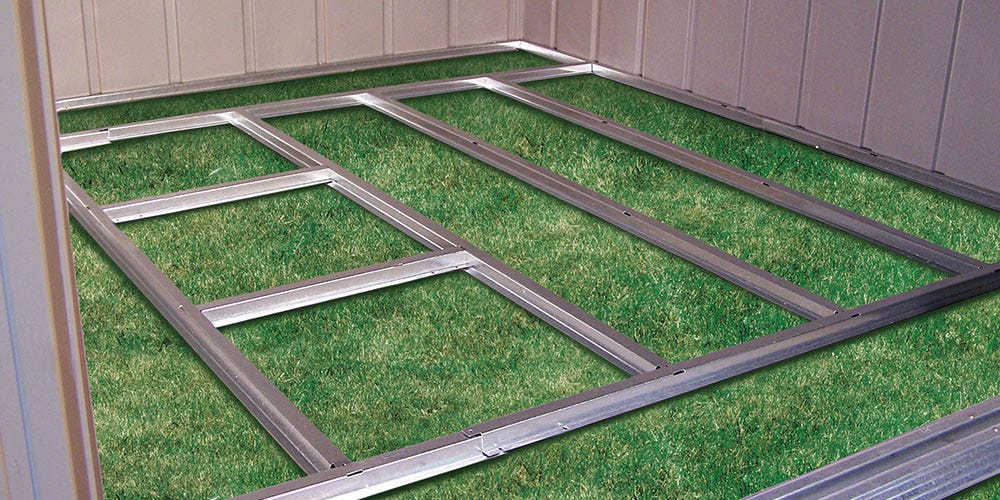

What to Do if You Already Have Mold
Despite learning how to prevent mold and implementing all of the most important mold prevention tips, you may still find that it has invaded your outdoor storage space. This is usually evident by the dank, pungent, and musty odor you’ll notice when you enter your enclosed gazebo or shed. You may also see mold on the surface of your belongings.
When this happens, it’s important to act fast - but don’t panic! Just follow these simple steps to mitigate the damage and get your building ready for safe storage once again.
1. Empty and Clean Your Storage Building
It does require some effort, but if you really want to protect your items, it’s best to take everything out of your shed or storage building. This will help you get a look at all the current mold damage and ensure you remove all the mold that has spread throughout your building.
Once it's empty, deep clean your shed using a mixture of one cup of bleach and a gallon of water—this will help eliminate mold spores. Next, you can either use a garden sprayer or a handheld spray bottle to spray down all surfaces, then use a sponge to scrub off any visible mold. When you’re done, make sure to spray everything down with clean water. Then, let everything dry for at least a day.
While the building is air drying, ensure you have plenty of ventilation and air movement. Make sure the building is 100% dry before you put anything back inside.
2. Gently Clean All Your Items
Mold is very prone to spreading, so one of the most important mold prevention tips is to make sure you don’t put anything with mold growth back into your shed. While you’re cleaning your items, make sure to wear gloves, a dust mask, and eye protection. This will help reduce any health risks. Porous items, like papers, are often irreversibly damaged by mold. If your items can’t be salvaged, consider throwing them away.
You should be able to easily clean items with hard surfaces using a mild detergent and a damp cloth. However, if you’ve been storing fabrics and upholstery – like patio furniture and cushions – you might have a challenge on your hands. Mold can often get deep into the fibers and cushions, make it very difficult to remove. However, all is not lost.
To clean these items, start by using a soft brush and a vacuum to loosen and remove embedded mold spores. Next, examine the items carefully so see if mold is present in deep crevices or other hidden areas. If you see mold, use a solution of one cup warm water and one cup rubbing alcohol. Finally, gently blot the mold away while being careful not to worsen the mold problem, as excessive dampness can make the mold problem worse.
If you've confident you've removed all the mold, you can safely return the cleaned items to your storage building. However, before putting anything back into storage, make sure it’s completely dry. Otherwise, your mold problem will return.
3. Avoid Recurrence of Mold
If you’ve followed the steps above, hopefully, you’ve eliminated your current mold problem. Next, you’ll want to review the mold prevention tips listed above and start implementing them right away. This is the best way to ensure the problem doesn't return.
Mold is an insidious problem that will eat away at your items and can even cause health problems. Catching it early is the best way to minimize potential damage. So, make it a habit to visually inspect your building at least once a week and any time you experience heavy rains.
Shop for Outdoor Storage Buildings Today!
Despite the potential for mold growth, a covered outdoor storage building is still the best way to protect your items. They're perfect for storing everything from lawn equipment and pool supplies to personal items and holiday décor.
Purchasing a high-quality storage building and taking the time to learn how to prevent mold damage will help ensure your items stay as safe as possible. If you don't have an outdoor storage building yet, now is a great time to get one.
Shelter Logic carries a wide range of quality steel sheds, gazebos, carports, and other outdoor storage buildings. Take a look through our inventory today!

